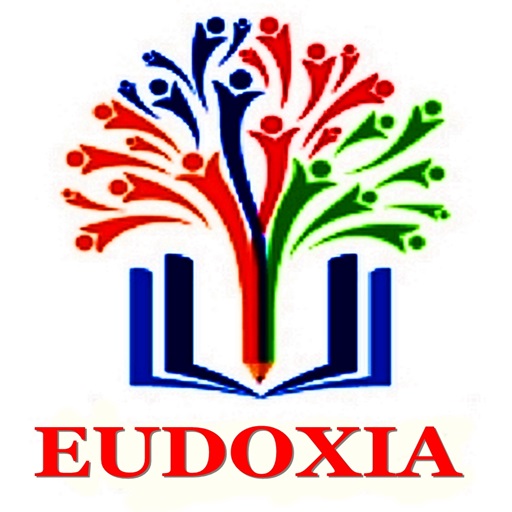WORAM 16.0 2024
16th International Workshop on Research Method and Methodology
Date: 3rd June (Monday) to 10th June (Monday), 2024

Get in Touch
+91-8787318074/+1-3607438948 (WhatsApp Available)
WORAM 16.0-2024
International Workshop on Research Method and Methodology
Date: 3rd June (Monday) to 10th June (Monday), 2024
Total 10 Credit Hours and Two e-Certificates will be provided to all the registered participants
Learn
- Methods of Data Collection for Qualitative, Quantitative and Experimental Research Design
- Carefully design your research methodology, whether it’s qualitative, quantitative, AI-driven, or experimental. Ensure that your chosen approach aligns with your research goals.
- Selection of Research Topic for Doctoral Research, Thesis Drafting, Minor and Major Research Project.
- Process of selection of Q1, Q2,Q3, Q4 Journals for SCOPUS FREE PUBLICATION
- Mechanics of Original and Review Manuscript for Free Publication Process
- Application of Software for Thesis Drafting, Editing, Plagiarism Checking, and Ethical Paraphrasing.
- Application of SPSS, NVivo 12, and Max QDA for Data Analysis
- Organize your research manuscript with a clear structure. Typically, it includes sections like Introduction, Literature Review, Methodology, Results, Discussion, and Conclusion.
- Start by clearly defining the objectives of your research and innovation project. Know what problem you are trying to solve or what new idea you are exploring.
- Use robust data analysis techniques to derive meaningful insights from your research findings. This may involve statistical analysis, machine learning algorithms, or qualitative analysis methods.
About 16th International Workshop WORAM 2024:
In today’s world, research has become an essential part of academic and professional development. Conducting research requires knowledge of research methods and methodologies, as well as proficiency in various research tools and software.
This workshop WORAM 16.0 can provide an opportunity for researchers from different countries and backgrounds to come together and share their experiences and knowledge. This can help to foster collaboration and cooperation workshops and to generate new ideas and approaches to research.
This International Workshop WORAM is one of the best international research manuscript drafting and patent filing process learning workshops can provide access to experts in the field, who can share their expertise and knowledge with participants. This can help to ensure that participants have a good understanding of the latest research methods and methodologies, as well as the most effective research tools and software.
This workshop WORAM can provide participants with hands-on training and practical experience in conducting research and especially the Manuscript Drafting Process by the use of the latest technology, AI and Software in an ethical manner. This can help to ensure that participants have the skills and knowledge needed to conduct high-quality research and free-quality publication in their respective fields.
This best international Live workshop WORAM can provide participants with opportunities to present their research and receive feedback from peers and experts. This can help to improve the quality of their research and to promote their work to a wider audience.
This workshop WORAM can also provide networking opportunities for participants, allowing them to establish professional contacts and collaborate on future research projects. This can help to facilitate the exchange of ideas and promote international collaboration in research.
Finally, this International Workshop WORAM-2024 can help to promote the development of quality research publication in different countries, by providing training and support to researchers in these regions. This can help to promote the growth of research in these areas, and to address important social and economic challenges facing these countries.
In conclusion, WORAM-2024 workshop can provide numerous benefits to researchers, including access to experts, hands-on training, opportunities for presentation and feedback, networking opportunities, and support for the development of research infrastructure. As such, such a workshop is an essential component of academic and professional development and should be promoted and supported by governments, academic institutions, and other stakeholders.
Higher research degrees are designed to equip students with the knowledge, skills, and experience necessary to undertake original research in their chosen field. A key component of a higher research degree is the thesis, which represents the culmination of the student’s research and provides evidence of their ability to conduct independent research. Effective thesis drafting is critical for ensuring that the thesis is of high quality and meets the requirements of the degree.
There are several reasons why effective thesis drafting is essential for higher research degrees. Firstly, a well-drafted thesis can demonstrate the student’s ability to undertake independent research and contribute to knowledge in their field. This can enhance the student’s reputation and standing in the academic community, and increase their prospects for future employment and research opportunities.
Secondly, effective thesis drafting can lead to more rigorous and robust research. By carefully planning and structuring the thesis, students can ensure that their research is well-organized and methodologically sound. This can increase the credibility and reliability of the research findings, and contribute to the advancement of knowledge in the field.
Thirdly, effective thesis drafting can also facilitate the peer-review process. When a thesis is well-drafted, it is easier for examiners and reviewers to assess the quality of the research and provide constructive feedback. This can lead to a more rigorous and thorough examination process, which can enhance the credibility and impact of the research.
Special Features of Workshop WORAM 16th Batch 2024 Includes:
-
Improved Research Publication Output: Workshop WORAM 16.0 2024 can lead to improved research output, as Researchers and Academicians will be better equipped with the necessary skills and knowledge to produce high-quality theses and research designs.
- Better Supervision of Scholars: Academicians who participate in such development programs can better supervise students who are working on their theses and research projects. This can ensure that the students are receiving the guidance they need to produce high-quality work.
- Access to Funding Opportunities: Faculty members who have a better understanding of research project funding can access more funding opportunities. This can lead to the development of more ambitious research projects and the pursuit of research questions that might otherwise be outside the scope of available funding.
- Increased Collaboration: Faculty development programs can promote collaboration among faculty members who might not otherwise work together. Collaboration can lead to the development of more interdisciplinary research projects that tackle complex questions and issues.
- Exposure to New Technologies: Thesis drafting and research project funding are fields that are constantly evolving, and new technologies can play a significant role in both areas. Faculty development programs can expose faculty members to new technologies and methodologies, which can enhance their research and teaching.
- Enhanced Professional Development: Faculty development programs on thesis drafting and research project funding can contribute to the professional development of faculty members, as they learn new skills and techniques that can be applied in their work. This can also lead to career advancement opportunities.
- Improved Time Management: Participating in faculty development programs can help faculty members to better manage their time, which can be critical when working on complex research projects. This can help them to prioritize their work and achieve more in less time.
- Better Integration of Research and Teaching: Faculty members who participate in faculty development programs on thesis drafting and research project funding can better integrate their research and teaching. This can lead to a more engaging and dynamic classroom environment and more effective teaching.
-
Improved Institutional Reputation: Faculty development programs can enhance the reputation of an institution, as faculty members who produce high-quality research and who are successful in obtaining research project funding can contribute to the institution’s profile and reputation in their respective fields.
Understanding the Indian Patent Process:
The Indian patent system has evolved significantly over the years, and it is now aligned with international standards. Participating in this international workshop WORAM-2023 delves into the Indian patent filing and publication process and provides several benefits:
- Global Market Access: India is a growing market with vast opportunities for innovation. Learning about the Indian patent system allows participants to tap into this market and protect their inventions effectively.
- Cost-Effective Filing: Understanding the nuances of the Indian patent system helps participants leverage cost-effective strategies for filing and maintaining patents, making it an attractive destination for innovators.
Exploring the US Patent System:
The United States is a global innovation hub, with a robust patent system that encourages creativity and entrepreneurship. Learning about the US patent process offers the following advantages:
- Strong Legal Framework: Understanding the US patent system equips innovators with knowledge of the rigorous legal framework for patent protection, ensuring comprehensive IP protection.
Navigating the German Patent Landscape:
Germany is renowned for its engineering and technological innovations, making it an attractive destination for inventors.
Cross-Border Collaboration and Innovation:
- Market Expansion: Knowledge of diverse patent systems enables participants to explore new markets and reach a global audience, accelerating the commercialization of their innovations.
- Intellectual Property Strategy: Learning about different patent systems allows participants to develop sophisticated intellectual property strategies that consider international opportunities and challenges.
The importance of the WORAM 16.0-2024 Workshop for international academicians cannot be overstated. Such programs are designed to support the professional growth and development of faculty members from different parts of the world. These programs are important because they help to improve the quality of teaching, research, and service provided by faculty members, while also promoting cross-cultural exchange and collaboration.
One of the primary benefits of this WORAM 16.0-2024 Workshop for international academicians is that it can help to bridge the cultural divide that often exists between faculty members from different parts of the world. Through these programs, faculty members can share their experiences, ideas, and perspectives, and learn from one another. This can lead to a better understanding of different cultural values and practices, which can be invaluable in promoting collaboration and understanding among faculty members.
In addition, WORAM 16.0-2024 Workshop can help to improve the quality of teaching and research. By providing faculty members with new and innovative approaches to teaching, they can become better educators and provide more engaging and effective learning experiences for their students. Likewise, by providing faculty members with the latest research methods and techniques, they can produce more rigorous and impactful research that advances knowledge and understanding in their respective fields.
Furthermore, this WORAM 16.0-2024 Workshop can also help international academicians to stay up-to-date with the latest developments in their fields. They can help faculty members to keep pace with rapidly changing technologies, emerging trends, and new approaches to teaching and research. By providing access to new and innovative resources and tools, faculty members can stay ahead of the curve and remain competitive in their respective fields.
Another benefit of WORAM 16.0-2024 Workshop is that it can provide opportunities for international academicians to build their professional networks. Through these programs, faculty members can connect with colleagues from other parts of the world and establish valuable collaborations and partnerships. These connections can lead to joint research projects, joint publications, and other forms of collaboration that can advance the field and promote cross-cultural exchange.
In conclusion, WORAM-2024 Workshop for international academicians is essential for promoting collaboration, understanding, and growth among faculty members from different parts of the world. By providing access to new and innovative approaches to teaching, research, and service, these programs can help faculty members to improve the quality of their work and stay ahead of the curve in their respective fields. They can also help to build professional networks and promote cross-cultural exchange, which can lead to joint research projects, joint publications, and other forms of collaboration. Institutions that invest in such programs are likely to attract top international talent and become leaders in promoting global education and research.
Qualitative research coding and the use of NVivo 12 software are important skills for faculty members who engage in qualitative research. Here are three of the best benefits of learning these skills in a faculty development program:
-
Improved Data Analysis: Qualitative research coding and the use of NVivo 12 software can improve the quality of data analysis for faculty members. NVivo 12 provides a range of tools for coding and organizing qualitative data, which can help faculty members to identify patterns, themes, and trends in their data. This can lead to more comprehensive and nuanced analyses, which can enhance the quality of research and publications.
-
Streamlined Workflow: Another benefit of learning qualitative research coding and the use of NVivo 12 software is that it can streamline the workflow for faculty members. The software can help to organize and manage large datasets, which can reduce the time and effort required for data analysis. This can enable faculty members to devote more time to other aspects of their research, such as writing and publishing.
-
Enhanced Collaboration: Qualitative research coding and the use of NVivo 12 software can also enhance collaboration among faculty members. The software enables multiple researchers to work on the same project simultaneously, and to share data and analyses in real-time. This can facilitate interdisciplinary and cross-institutional collaboration, which can lead to more comprehensive and impactful research.
Overall, learning qualitative research coding and the use of NVivo 12 software can provide numerous benefits to faculty members as part of a broader faculty development program. These benefits include improved data analysis, streamlined workflow, and enhanced collaboration.
WORAM 16.0-2024
International Workshop on Research Method and Methodology
Date: 3rd June (Monday) to 10th June (Monday), 2024
Agenda of Workshop WORAM 16.0 – 2024
Day 1: Date: 3rd June (Monday) 2024
Topic: Fundamentals of Research Method and Methodology for Research
- Selection of Appropriate Research Design: It’s vital to choose a research design that aligns with your research objectives and questions. Qualitative research often utilizes designs like case studies, ethnography, or grounded theory, focusing on understanding human experiences and behaviors. Quantitative research, on the other hand, often employs experimental, quasi-experimental, or survey research designs, focusing on measuring and analyzing numerical data.
- Understanding and Implementing Sampling Techniques: In qualitative research, purposive sampling is commonly used, where participants are selected based on their relevance to the research question. Quantitative research often relies on random sampling, which helps in generalizing the findings to a larger population. The sampling method must be rigorously defined and justified in both cases.
- Data Collection Methods: Qualitative research typically involves open-ended, in-depth data collection methods like interviews, focus groups, and observations, aiming to gather rich, detailed data. Quantitative research uses structured methods like surveys and questionnaires, designed to collect measurable, numerical data.
- Data Analysis Techniques: Qualitative data analysis involves thematic analysis, coding, and identifying patterns and narratives within the data. Quantitative data analysis, however, uses statistical methods to analyze numerical data, identifying relationships, trends, and patterns that can be generalized.
- Validity and Reliability: Ensuring validity (accuracy and truthfulness of the findings) and reliability (consistency of the results) is crucial in both research types. In qualitative research design, might involve member checking and triangulation, while in quantitative research, it often involves statistical tests to confirm the reliability and validity of the data.
-
Ethical Considerations: Both qualitative and quantitative research must adhere to ethical standards, including obtaining informed consent, ensuring participant confidentiality, and avoiding harm to participants. Researchers must also be aware of and declare any potential conflicts of interest
Day 2: Date: 5th June (Wednesday) 2024
Topic: Effective Manuscript Drafting
- Strong and Clear Research Focus: The manuscript should begin with a clear, concise, and compelling research question or hypothesis. It’s essential to articulate the significance of the research, its contribution to the field, and how it addresses a gap in existing literature. This sets the stage for the entire manuscript and captures the interest of the readers and reviewers.
- Comprehensive Literature Review: A thorough literature review is crucial. It should not only summarize existing research but also critically evaluate it, demonstrating your deep understanding of the field. Highlighting the research gaps that your study aims to fill is particularly important in establishing the relevance and originality of your work.
- Robust Research Methodology: The methodology section must be detailed and clear, allowing readers to understand and replicate your study if desired. This includes a precise description of the research design, data collection methods, and data analysis procedures. Justifying the chosen methods and discussing their limitations is also key.
- Clear Presentation of Results: Results should be presented logically, clearly, and concisely. Use appropriate tables, figures, and statistical analysis to convey your findings effectively. It’s important to present the data in a way that directly addresses your research question and supports your conclusions.
- Critical Analysis and Discussion: The discussion section should interpret your results, explaining how they contribute to the broader field. This includes comparing and contrasting your findings with previous studies, discussing the implications of your work, acknowledging limitations, and suggesting areas for future research.
- Adherence to Journal Guidelines and Writing Quality: Strictly follow the specific format, style, and submission guidelines of the journal. Additionally, the overall quality of writing should be high, with clear, concise, and grammatically correct language. It’s advisable to have your manuscript proofread or edited, especially if English is not your first language.
Day 3: Date: 7th June (Friday) 2024
Topic: Qualitative Research Design
- Choice of Research Design: Qualitative research offers a variety of designs like ethnography, case study, grounded theory, phenomenology, and narrative research. Each design has its specific approach to exploring and understanding phenomena. The choice of design should align with the research question, the nature of the subject being studied, and the goals of the research.
- Data Collection Techniques: Common qualitative data collection methods include in-depth interviews, participant observation, focus groups, and analysis of texts or artifacts. These methods are geared towards gathering rich, detailed data that provide deep insights into participants’ perspectives and experiences.
- Sampling Methods: Qualitative research typically uses purposive or theoretical sampling rather than random sampling. The goal is to select individuals, groups, or cases that are particularly informative about the issue being studied, rather than aiming for a statistically representative sample.
- Coding:
Inductive Coding
- Data-Driven Analysis: Inductive coding is a bottom-up approach where themes and categories emerge from the data itself, without preconceived notions or theories guiding the process. The researcher reads through the data (such as interview transcripts, field notes, etc.) and identifies patterns and themes that naturally arise.
- Flexibility and Openness: This method is characterized by its flexibility. Researchers approach the data with an open mind, allowing for unexpected findings and new insights. The coding process starts with specific observations and moves to broader generalizations and theories, often leading to the development of new theoretical insights.
Deductive Coding
- Theory-Driven Analysis: Deductive coding, in contrast, is a top-down approach where coding starts with a pre-existing theory or framework. The researcher approaches the data with specific ideas or hypotheses in mind and codes the data according to these predetermined categories.
- Structured and Predefined Coding Scheme: This approach is less flexible than inductive coding, as it involves applying a structured coding scheme to the data.
Day 4: Date: 8th June (Saturday) 2024
Topic: Quantitative Research Design
- Variety of Research Designs: Quantitative research can employ various designs like experimental, quasi-experimental, and survey research. Each design has specific requirements in terms of data collection and analysis. SPSS can be used to analyze data from all these designs, but the approach might differ based on the design’s structure and goals.
- Data Collection Methods: In quantitative research, data collection often involves structured methods such as surveys, questionnaires, and standardized measurement tools. The data collected is numerical and is typically designed to be easily inputted into SPSS for analysis. Ensuring that data is collected in a format that is compatible with SPSS (like Excel spreadsheets or CSV files) can streamline the analysis process.
- Data Cleaning and Preparation: Before analysis, data must be prepared and cleaned. This involves checking for and handling missing values, and outliers, and ensuring that the data is correctly formatted for analysis in SPSS. Data preparation is crucial as it directly impacts the accuracy and reliability of the analysis results.
- Statistical Tests and Analysis: SPSS offers a wide range of statistical tests and procedures, including t-tests, ANOVAs, regression analysis, factor analysis, and non-parametric tests. The choice of statistical test depends on the research question, the design of the study, and the nature of the data. Understanding the assumptions and correct application of each test is vital for valid results.
- Interpreting Outputs and Results: SPSS provides outputs in tables and graphs that need careful interpretation. This includes understanding the significance levels, test statistics, confidence intervals, and effect sizes. Proper interpretation of these outputs is crucial to draw meaningful conclusions from the data.
-
Reporting Findings: The final step involves reporting the findings in a clear and comprehensible manner. This includes not only presenting the statistical results but also interpreting them in the context of the research question and discussing their implications. It’s important to report both significant and non-significant results to provide a complete picture of the research findings.
Day 5: Date: 10th June (Monday) 2024
Topic: Plagiarism Removal, Application of AI and Ethical Scopus Publication
- Understanding Plagiarism: Plagiarism is not just about copying text; it includes the unauthorized use or close imitation of the language and thoughts of another author and the representation of them as one’s original work. This encompasses paraphrasing without credit, directly copying text, and not citing sources properly. Understanding the breadth of what constitutes plagiarism is the first step in avoiding it.
- Effective Ethical Paraphrasing and Citation: To avoid plagiarism, it’s essential to paraphrase effectively. This means expressing the ideas from your sources in your own words and style, not just changing a few words here and there. Equally important is a proper citation of the source, which acknowledges the original author and helps readers trace the source material.
- Use of Plagiarism Detection Software: Utilizing plagiarism detection tools like Turnitin or Grammarly can help identify instances of plagiarism in a manuscript. These tools compare your work against a vast database of published material to detect similarities. However, it’s crucial to review the flagged sections critically and make appropriate changes rather than relying solely on software.
- Ethical Manuscript Drafting for Scopus Journals: When aiming for publication in Scopus-indexed journals, ethical manuscript drafting is crucial. This includes ensuring that your work is original, properly citing all sources, and avoiding practices like self-plagiarism (reusing your own previously published work without citation) or ‘salami slicing’ (publishing very similar papers based on the same experiment or study).
- Understanding Scopus Journal Requirements: Each Scopus-indexed journal has its specific requirements for manuscript submission, including formatting, style guides, and ethical guidelines. Familiarize yourself with these requirements thoroughly before submission to ensure your manuscript adheres to the highest standards of academic integrity
- Enhanced Data Analysis Capabilities: AI algorithms and machine learning techniques can handle vast datasets more efficiently than traditional statistical methods, often uncovering patterns and insights that might be missed by human analysis.
Speakers of WORAM- 2024









Organizing Committee Members















WORAM 16.0-2024
Day(s)
:
Hour(s)
:
Minute(s)
:
Second(s)
Eudoxia Research Centre, Mumbai, Bangalore, Guwahati, India
